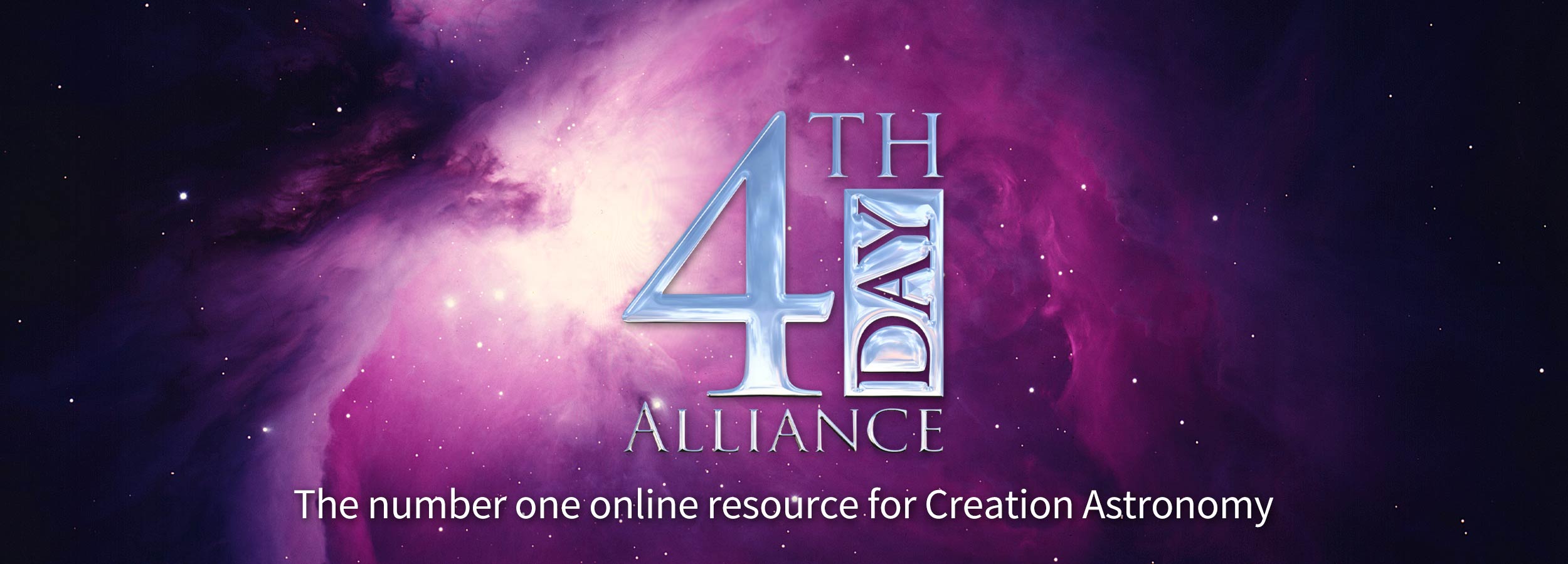
THE CONSTELLATIONS
The Constellations
The majority of the common constellations date back to ancient times, but the exact list that we have today did not come into being until the early 20th century. Between 1922 and 1930, the International Astronomical Union (IAU) passed a series of resolutions which divided the celestial sphere into 88 defined areas with proper spellings and abbreviations. The constellations all fit on the celestial sphere like puzzle pieces on a giant 3-D spherical puzzle. Historically speaking, the word constellation was used in reference to a group of stars that represented an object of some sort (like the Big Dipper or Orion). Today, however, the word constellation officially is in reference to the "puzzle pieces" or divisions of the celestial sphere that contain these stars. The common star groups and shapes, like the big dipper, are now called asterisms.Each constellation name has two forms: the nominative, for use when you're talking about the constellation itself, and the genitive, or possessive, which is used in star names. For instance, Hamal, the brightest star in the constellation Aries (nominative form), is also called Alpha Arietis (genitive form), meaning literally "the Alpha of Aries." This doesn't make life very easy for amateurs, but as the old saying goes, "it is what it is." We have included a chart below outlining the abbreviations and names of each of the 88 constellations.
The first 44 constellations (1-44):
| Abbreviation | Nominative Genitive English Nickname | Nominative Pronunciation Genitive Pronunciation Comments |
| And | Andromeda Andromedae the Chained Maiden | an-DRAH-mih-duh an-DRAH-mih-dee ancient, daughter of Cepheus |
| Ant | Antlia Antliae the Air Pump | ANT-lee-uh ANT-lee-ee 18th century |
| Aps | Apus Apodis the Bird of Paradise | APE-us, APP-us APP-oh-diss 16th century |
| Aqr | Aquarius Aquarii the Water Bearer | uh-QUAIR-ee-us uh-QUAIR-ee-eye ancient, in zodiac |
| Aql | Aquila Aquilae the Eagle | ACK-will-uh, uh-QUILL-uh ACK-will-ee, uh-QUILL-ee ancient |
| Ara | Ara Arae the Altar | AIR-uh, AR-uh AIR-ee, AR-ee southernmost ancient constellation |
| Ari | Aries Arietis the Ram | AIR-eez, AIR-ee-yeez uh-RYE-ih-tiss ancient, in zodiac |
| Aur | Auriga Aurigae the Charioteer | aw-RYE-guh aw-RYE-ghee ancient |
| Boo | Boötes Boötis the Herdsman | bo-OH-teez bo-OH-tiss ancient, also called Bear Watcher |
| Cae | Caelum Caeli the Engraving Tool | SEE-lum SEE-lye 18th century |
| Cam | Camelopardalis Camelopardalis the Giraffe | cuh-MEL-oh-PAR-duh-liss cuh-MEL-oh-PAR-duh-liss 17th century |
| Cnc | Cancer Cancri the Crab | CAN-ser CANG-cry ancient, in zodiac |
| Cvn | Canes Venatici Canum Venaticorum the Hunting Dogs | CANE-eez (CAN-eez) ve-NAT-iss-eye CANE-um (CAN-um) ve-nat-ih-COR-um 17th century |
| CMa | Canis Major Canis Majoris the Great Dog | CANE-iss (CAN-iss) MAY-jer CANE-iss (CAN-iss) muh-JOR-iss ancient |
| CMi | Canis Minor Canis Minoris the Lesser Dog | CANE-iss (CAN-iss) MY-ner CANE-iss (CAN-iss) mih-NOR-iss ancient |
| Cap | Capricornus Capricorni the Sea Goat | CAP-rih-CORN-us CAP-rih-CORN-eye ancient, in zodiac, fish-goat hybrid |
| Car | Carina Carinae the Keel | cuh-RYE-nuh, cuh-REE-nuh cuh-RYE-nee, cuh-REE-nee of the ship Argo |
| Cas | Cassiopeia Cassiopeiae the Seated Queen | CASS-ee-uh-PEE-uh CASS-ee-uh-PEE-ye ancient, Andromeda's mother |
| Cen | Centaurus Centauri the Centaur | sen-TOR-us sen-TOR-eye ancient, far-southern |
| Cep | Cepheus Cephei the King | SEE-fyoos, SEE-fee-us, SEF-ee-us SEE-fee-eye, SEF-ee-eye ancient, Andromeda's father |
| Cet | Cetus Ceti the Sea Monster | SEE-tus SEE-tie ancient, Andromeda's assailant |
| Cha | Chamaeleon Chamaeleontis the Chameleon | cuh-MEAL-yun, cuh-MEAL-ee-un cuh-MEAL-ee-ON-tiss 16th century |
| Cir | Circinus Circini the Drafting Compass | SER-sin-us SER-sin-eye 18th century |
| Col | Columba Columbae the Dove | cuh-LUM-buh cuh-LUM-bee 16th century, Noah's dove |
| Com | Coma Berenices Comae Berenices Berenice's Hair | COE-muh BER-uh-NICE-eez COE-mee BER-uh-NICE-eez Queen of Egypt c. 240 B.C. |
| CrA | Corona Australis Coronae Australis the Southern Crown | cuh-ROE-nuh aw-STRAL-iss cuh-ROE-nee aw-STRAL-iss ancient, far-southern |
| CrB | Corona Borealis Coronae Borealis the Northern Crown | cuh-ROE-nuh bor-ee-AL-iss3 cuh-ROE-nee bor-ee-AL-iss3 ancient |
| Crv | Corvus Corvi the Crow | COR-vus COR-vye ancient |
| Crt | Crater Crateris the Cup | CRAY-ter cruh-TEE-riss ancient |
| Cru | Crux Crucis the Southern Cross | CRUCKS, CROOKS CROO-siss 16th century, carved out of Centaurus |
| Cyg | Cygnus Cygni the Swan | Cygnus Cygni the Swan |
| Del | Delphinus Delphini the Dolphin | del-FINE-us, del-FIN-us del-FINE-eye, del-FIN-eye ancient |
| Dor | Dorado Doradus the Dolphinfish | duh-RAH-do duh-RAH-dus 16th century |
| Dra | Draco Draconis the Dragon | DRAY-co druh-CONE-iss ancient |
| Eql | Equuleus Equulei the Little Horse | eh-QUOO-lee-us eh-QUOO-lee-eye ancient |
| Eri | Eridanus Eridani the River | ih-RID-un-us ih-RID-un-eye ancient, a mythological river |
| For | Fornax Fornacis the Furnace | FOR-naks for-NAY-siss 18th century |
| Gem | Gemini Geminorum the Twins | JEM-uh-nye, JEM-uh-nee JEM-uh-NOR-um ancient, in zodiac |
| Gru | Grus Gruis the Crane | GRUSS, GROOS GROO-iss 16th century |
| Her | Hercules Herculis Hercules | HER-kyuh-leez HER-kyuh-liss ancient, mightiest of heroes |
| Hor | Horologium Horologii the Clock | hor-uh-LOE-jee-um hor-uh-LOE-jee-eye 18th century |
| Hya | Hydra Hydrae the Water Snake | HIGH-druh HIGH-dree usually female in ancient times |
| Hyi | Hydrus Hydri the Male Water Snake | HIGH-drus HIGH-dry 16th century |
| Ind | Indus Indi the Indian | IN-dus IN-dye 16th century |
The second 44 constellations (45-48):
| Abbreviation | Nominative Genitive English Nickname | Nominative Pronunciation Genitive Pronunciation Comments |
| Lac | Lacerta Lacertae the Lizard | luh-SER-tuh luh-SER-tee 17th century |
| Leo | Leo Leonis the Lion | LEE-oh lee-OH-niss ancient, in zodiac |
| LMi | Leo Minor Leonis Minoris the Lesser Lion | LEE-oh MY-ner lee-OH-niss mih-NOR-iss 17th century |
| Lep | Lepus Leporis the Hare | LEEP-us, LEP-us LEP-or-iss ancient |
| Lib | Libra Librae the Scales | LEE-bruh, LYE-bruh LEE-bree, LYE-bree ancient, in zodiac |
| Lup | Lupus Lupi the Wolf | LOOP-us LOOP-eye ancient, far-southern |
| Lyn | Lynx Lyncis the Lynx | LINKS LIN-siss 17th century |
| Lyr | Lyra Lyrae the Lyre | LYE-ruh LYE-ree ancient kind of harp |
| Men | Mensa Mensae the Table | MEN-suh MEN-see 18th century, from Table Mountain |
| Mic | Mensa Mensae the Table | MEN-suh MEN-see 18th century, from Table Mountain |
| Mon | Monoceros Monocerotis the Unicorn | muh-NAH-ser-us muh-NAH-ser-OH-tiss 17th century |
| Mus | Musca Muscae the Fly | MUSS-cuh MUSS-see, MUSS-kee 18th century |
| Nor | Norma Normae the Carpenter's Square | NOR-muh NOR-mee 18th century |
| Oct | Octans Octantis the Octant | OCK-tanz ock-TAN-tiss 18th century |
| Oph | Ophiuchus Ophiuchi the Serpent Bearer | OFF-ee-YOO-kus, OAF-ee-YOO-kus OFF-ee-YOO-kye, OAF-ee-YOO-kye ancient |
| Ori | Orion Orionis the Hunter | oh-RYE-un, uh-RYE-un or-eye-OH-niss ancient, a mythological hunter |
| Pav | Pavo Pavonis the Peacock | PAY-vo puh-VOE-niss 16th century |
| Peg | Pegasus Pegasi the Winged Horse | PEG-us-us PEG-us-eye ancient |
| Per | Perseus Persei the Hero | PER-see-us, PER-syoos PER-see-eye ancient, Andromeda's rescuer |
| Phe | Phoenix Phoenicis the Phoenix | FEE-nix fuh-NICE-iss 16th century |
| Pic | Pictor Pictoris the Painter | PICK-ter pick-TOR-iss 18th century, from Painter's Easel |
| Psc | Pisces Piscium the Fishes | PICE-eez, PISS-eez PICE-ee-um, PISH-ee-um ancient, in zodiac |
| PsA | Piscis Austrinus Piscis Austrini the Southern Fish | Piscis Austrinus Piscis Austrini the Southern Fish |
| Pup | Puppis Puppis the Stern | PUP-iss PUP-iss of the ship Argo |
| Pyx | Pyxis Pyxidis the Magnetic Compass | PIX-iss PIX-ih-diss of the ship Argo |
| Ret | Reticulum Reticulii the Reticle | rih-TICK-yuh-lum rih-TICK-yuh-lye 18th century |
| Sge | Sagitta Sagittae the Arrow | suh-JIT-uh suh-JIT-ee ancient |
| Sgr | Sagittarius Sagittarii the Archer | SAJ-ih-TARE-ee-us SAJ-ih-TARE-ee-eye ancient, in zodiac |
| Sco | Scorpius Scorpii the Scorpion | SCOR-pee-us SCOR-pee-eye ancient, in zodiac |
| Scl | Sculptor Sculptoris the Sculptor | SCULP-ter sculp-TOR-iss 18th century, from Sculptor's Studio |
| Sct | Scutum Scuti the Shield | SCOOT-um, SCYOOT-um SCOOT-eye, SCYOOT-eye 17th century |
| Ser | Serpens Serpentis the Serpent | SER-punz ser-PEN-tiss ancient |
| Sex | Sextans Sextantis the Sextant | SEX-tunz sex-TAN-tiss 18th century |
| Tau | Taurus Tauri the Bull | TOR-us TOR-eye ancient, in zodiac |
| Tel | Telescopium Telescopii the Telescope | tel-ih-SCOPE-ee-um tel-ih-SCOPE-ee-eye 18th century |
| Tri | Triangulum Trianguli the Triangle | try-ANG-gyuh-lum try-ANG-gyuh-lye ancient |
| TrA | Triangulum Australe Trianguli Australis the Southern Triangle | try-ANG-gyuh-lum aw-STRAL-ee try-ANG-gyuh-lye aw-STRAL-iss 16th century |
| Tuc | Tucana Tucanae the Toucan | too-KAY-nuh, too-KAH-nuh too-KAY-nee, too-KAH-nee 16th century |
| UMa | Ursa Major Ursae Majoris the Great Bear | ER-suh MAY-jur ER-suh muh-JOR-iss ancient, also called Wagon |
| UMi | Ursa Minor Ursae Minoris the Lesser Bear | ER-suh MY-ner ER-suh mih-NOR-iss ancient |
| Vel | Vela Velorum the Sails | VEE-luh, VAY-luh vee-LOR-um, vuh-LOR-um of the ship Argo |
| Vir | Virgo Virginis the Maiden | VER-go VER-jin-iss ancient, in zodiac |
| Vol | Volans Volantis the Flying Fish | VOH-lanz vo-LAN-tiss 16th century |
| Vul | Vulpecula Vulpeculae the Fox | vul-PECK-yuh-luh vul-PECK-yuh-lee 17th century |
The Origin of Constellations
Constellations, and their names, are things that humans simply "made up." Various cultures over the centuries have divided and organized the stars in various different ways, though a few sky patterns appear to be universal amongst many. Most likely, this is the result of a common origin—particularly Babel. In other words, if we assume that the night sky was broken up into "constellations" or groups, or patterns, before Babel, then after God divided the people at Babel, they all would have taken their constellations (or knowledge of the night sky) with them in their various "people groups."However, today, with the exception of a handful of constellations, the night sky has been seen differently by every generation and culture. So, how did we get such strange and varied names for our constellations today—from Greek, Roman, and ancient cultures? In short, when navigators in the 15th century began to explore the seas, they ventured down past the equator and began to notice stars that were not in Ptolemy's catalog. They then organized these new stars into new constellations (mostly stars in the Southern Hemishpere). Later, with the advent of the telescope, astronomers began to create additional constellations to fill in the gaps between the new ones and the traditional ones.
Then, when Rome conquered the Greek-speaking world in around 30 B.C., all of the Greek constellation names were wither translated or transliterated into Latin (which was the language of the Roman Empire). This is why the constellations have both Greek and Latin names and it is also why Latin become the standard language for scientific nomenclature. Yes, it can be very confusing, but as the old saying goes, "it is what it is."
Today, the names of the constellations are kept consistent throughout the world by the International Astronomical Union (IAU).
STARGAZING BASICS:
MOST POPULAR LINKS
ADDRESS:
4th Day Alliance
1908 E Osceola Pkwy #222
Kissimmee, FL 34743
(689) 888-7944
4th Day Alliance
1908 E Osceola Pkwy #222
Kissimmee, FL 34743
(689) 888-7944

